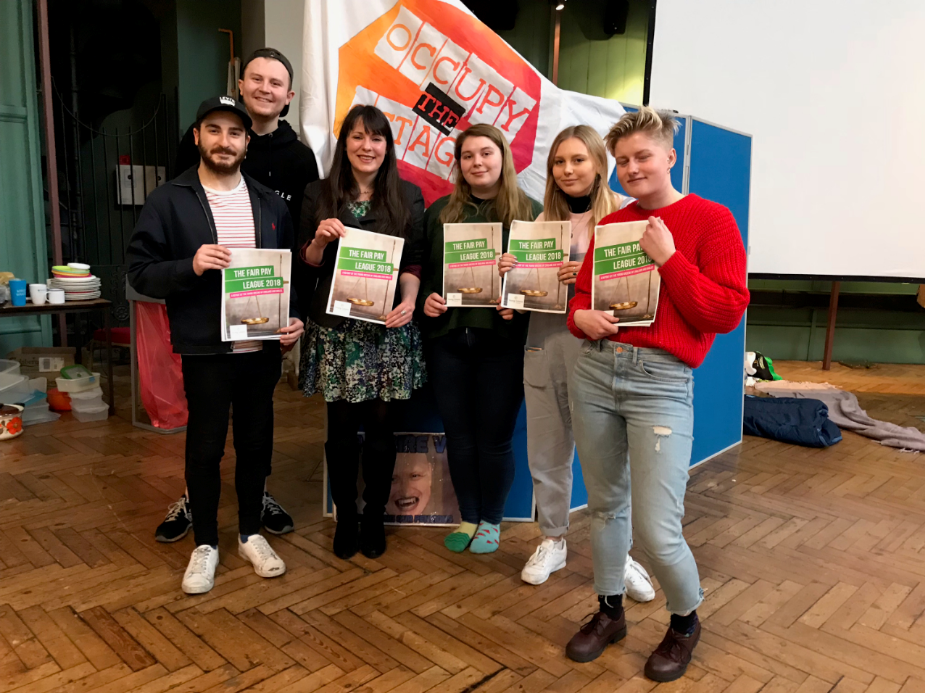Young Greens expose shocking pay disparity on UK campuses
Something transformative is happening across the UK’s universities. Branch meetings of the Universities and Colleges Union (UCU) – which in the past have struggled to attract more than a handful of members – have in recent weeks packed out lecture theatres, as university staff fight to have their voices heard not just by Universities UK but by their union too. A wave of student occupations in solidarity with the strike have gained important concessions – at King’s College London, occupiers forced principle Ed Byrne to agree to begin the process of bringing the university’s cleaners in-house; At Queen Mary’s, the ongoing occupation is making important progress towards securing student bursaries.

As one lecturer said to me in our first class back after the strike, ‘students have to realise that they’re not coming back to the same department that they left.’
This was the perfect week, then, for the launch of the Young Greens’ Fair Pay report – a report with some fairly shocking findings. Five years on from the original, compiled in 2013, the report is the result of a huge volume of Freedom of Information requests and calculates the ratio between the highest and lowest paid staff at universities across the UK. The Young Greens’ recommended ratio, at 10:1 (i.e, no member of staff should be paid more than 10 times the lowest paid member of staff), is really pretty generous – yet only a handful of universities achieve it.
While 15,594 staff members at universities across the UK are paid less than the living wage, vice chancellors are earning an average of £127.60 per hour. These findings are eye-watering.
Appropriately, the report launch was generously hosted by the occupation at Queen Mary’s University, where students have done incredible work in building a vibrant space and negotiating with sometimes hostile management on their demands. In fact, the launch was nearly scuppered when management threatened to deny entry to Green deputy leader Amelia Womack who was set to speak at the event – unless the occupiers agreed to leave later that day. When Amelia did make it into the venue, the launch was interrupted by seven police officers who entered the occupation on the grounds that they’d been told someone had come into the space with a knife.
Queen Mary are denying @Amelia_Womack access to #occupytheoctagon where we planned to launch our 2nd Fair Pay Campus Report today. RT if you agree it is OUTRAGEOUS they’re using our event as leverage to force the students to end their courageous occupation. #freespeechoncampus pic.twitter.com/00o55uLkk5
— Young Greens 🌱 (@YoungGreenParty) March 29, 2018
But this environment was entirely fitting for the discussion we had about the strikes, the student movement more broadly, and how students can make a real difference on our campuses. We talked about the difficulties of organising as students: people leave once they’ve finished their degrees; it’s sometimes hard to engage the wider student body; it’s incredibly difficult to make our voices heard by intransigent management and vice chancellors.
We also shared experiences, ideas and enthusiasm. It’s clear that this is a pivotal moment for the future of higher education in the UK, and that the strike has radicalised both staff and students in a way that won’t simply be reversed by the resolution of the pensions dispute. What’s crucial now is that we capitalise on this moment. A key first step is educating our fellow students about the strike, what’s at stake and the wider issues of marketisation and low pay at universities. Resources like the Young Greens’ Fair Pay report are absolutely key to that, and provide a jumping-off point for organising focused, strategic campaigns on campus. Let’s seize this moment, build on the student-worker solidarity we’ve seen blossom during the strike, and fight for fair pay at our universities.
Read the 2018 report by clicking here.




Leave a Reply